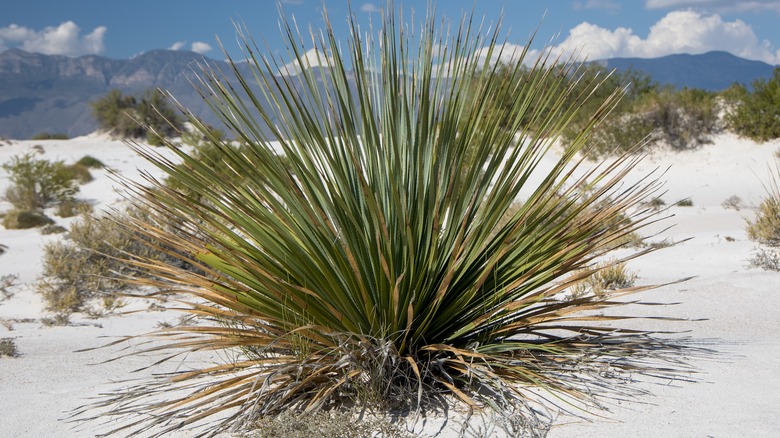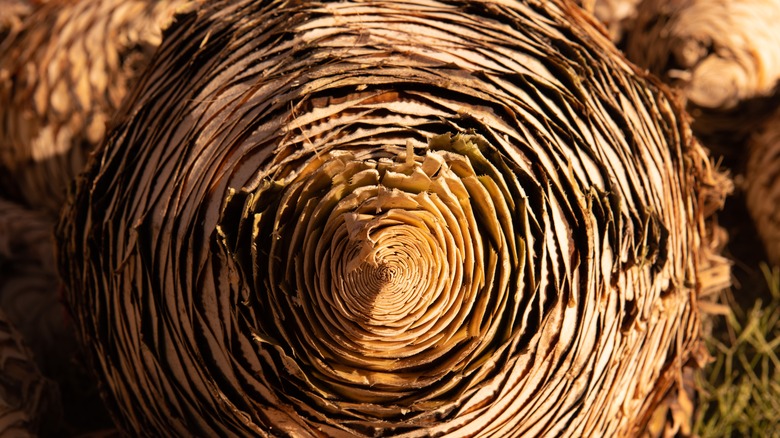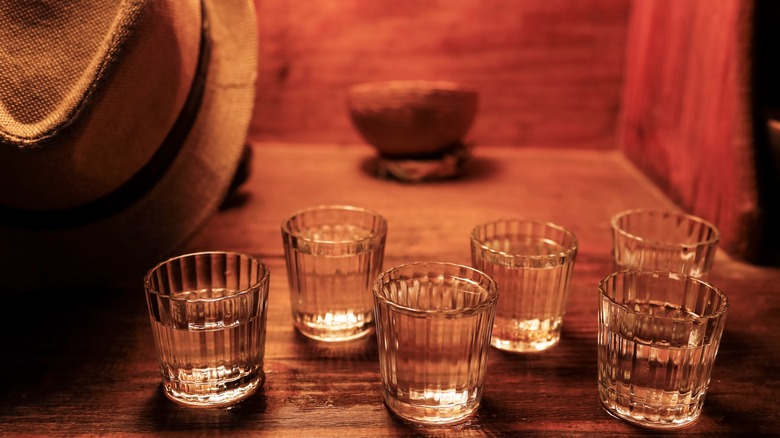Sotol: The Lesser-Known Liquor Tequila Lovers Should Try
From booming bottle sales, the creation of new innovative cocktails, and the opening of themed bars, Mexican spirits are all the rage in the U.S. And while agave-based liquors, tequila, and mezcal receive the majority of the spotlight, they're only the tip of the iceberg when it comes to delicious distillation in the North American nation.
An enthralling aspect of Mexican spirits is their regional ties — each distillate showcases the culture and geography of its origins. Tequila can only be produced in Jalisco state, and mezcal is distilled across 10 states, but it's especially famed in Oaxaca. Mexican rum, specifically the charanda type, is known for its origins in Michoacán. Then there's also Sonoran-based bacanora, Chiapan ceremonial pox — and last but not least, sotol. Intertwined with the arid climates of the north, this desert-spoon-based liquor is something special. Deliciously complex, varied, and malleable for cocktails, it's a must-try for any tequila and mezcal lover. Let's dive into what it's all about.
What is sotol?
Unlike agave species, sotol is a spirit made from the Dasylirion shrub, also commonly known as desert spoon. Like mezcal, the distillate can utilize a wide variety of the shrub's species — currently, there are nearly two dozen in production. The most common sotol is made from wheeleri, which is prevalent in Mexico, while the texanum variety is favored in the U.S. However, many producers offer a selection of various desert spoon types. Depending on where it's grown and how it's produced, each species imparts a unique flavor, leading to impressive variation.
The shrub grows in a large area covering much of Mexico and the Southwestern U.S. The Mexican government gives official denomination of origin to three regions — Chihuahua, Coahuila, Durango, all located in Northern Mexico. However, the spirit is also produced in Oaxaca, where it's called Cucharillo, and Sonora, where it's called Palmilla. In recent years, several sotol distilleries have also opened in the U.S.
What does it taste like?
Due to the complex impact of terroir on the spirit, sotol encompasses a wide range of flavors. The spirit possesses piney, even fungal notes in regions with more precipitation. Meanwhile, distillations from the desert offer earthy, even leather-like qualities. Typically, sotol palettes run on the herbaceous side, with a variety of floral notes, citrusy undertones, or cinnamon-like spices.
Human-controlled factors like the fermentation, roasting, and distillation process also impact the spirit's final flavor. Due to the types of yeasts introduced, sotol can even have a funky, cheese-like aroma. Some distillers may age sotol, employing the same categorizations as with tequila — joven, reposado, and anejo. Barrel-aging imparts a slight sweetness, and to add to the breadth of flavor possibilities, some Mexican producers add walnuts after distilling, which produces an Irish-cream-like spirit. From the ground to the bottle, there is a multitude of factors affecting its flavor — the best way to understand sotol's unique taste is to take a sip.
How is sotol made?
First, wild sotols are harvested — the plant is uprooted, the leaves are cut off, and the heart — or sotol — is removed. Since it takes up to 15 years for a plant to mature, the root system is deposited back into the soil for the plant to regrow.
Next, an underground earth oven is covered with rocks and varying hardwood, including pine, mesquite, and white oak. Once the fire is lit, the sotol hearts are soaked in water and then added to the pit. Rather than charring, the process is more akin to steaming, although there is flavor imparted from the wood. Once properly cooked, the pinas are removed and shredded. The work may be done manually or with machines, depending on the producer.
Finally, the sotol plant is ready for the beginning of the distillation process — the mash is first loaded into an open-air vat, which is exposed to oxygen. This introduces wild yeasts, which ferment the sotol. The resultant liquid is then distilled, usually in copper stills. Numerous methods of heating are utilized — sometimes gas, and other times wood fire. After this step, sotols are bottled, where they are sometimes aged or infused.
What's the best way to drink it?
Sotol can be served chilled or at room temperature and is best enjoyed neat in a shot glass, but can also be poured into a copita, like mezcal. As a complex spirit with many nuances, it shines brightest as a stand-alone beverage — and like with mezcal, it's meant for sipping rather than shooting in one go.
However, innovative mixologists have started to integrate sotol into cocktails, too. If thoughtfully combined, the spirit is highly versatile — especially meshing well with mezcal and tequila. Its strong character makes for a great base in an old-fashioned, and its herbal quality can integrate nicely into a punch. With sotol's less overbearing palette compared to mezcals, it's an easy substitution for a range of tequila and gin cocktails. Producer Desert Door even advocates for their sotol to be used in a sangria — showcasing the spirit's versatility. With so many ways to enjoy it, a bottle of sotol won't gather dust for long.
Why is sotol obscure, and where can you find it?
Although produced for 300 years, sotol remained unknown for most of its existence. This is laregly due to regulation — it was illegal to produce until the 1990s. Additionally, it carried moonshine-like associations, with some believing the spirit would cause blindness due to improper distillation. However, a new wave of producers is now establishing the spirit and reigniting its storied heritage. Such ambitions are being met with considerable success — sotol is becoming more known on both sides of the border.
For the best selection of sotol, head to Mexico. It's available at bars and distilleries — especially in the Chihuahua state, where production is largest. In other regions, the best chance of sampling sotol is at a mezcaleria since it's usually grouped with agave spirits. Increasingly, sotol is gathering traction in the U.S., too, both in production and consumption. Both American and Mexican distilled sotols are available online and in liquor stores.





